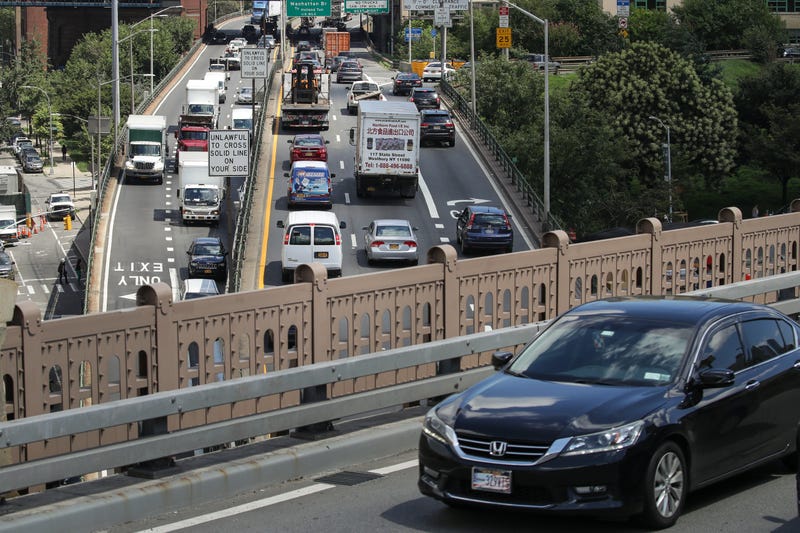
NEW YORK (1010 WINS0 – The BQE lives for another 20 years.
Mayor Bill de Blasio on Wednesday announced plans to squeeze another 20 years of life out of the deteriorating cantilevered portion of the Brooklyn-Queens Expressway.
The notoriously congested highway remained largely unchanged during that time -- with one notable exception: the city will reduce the number of lanes in each direction from three to two between Atlantic Avenue and the Brooklyn Bridge to reduce the weight of traffic.
De Blasio pledged to spend the last months in office working to provide a “long-term vision” that will more dramatically reimagine the corridor for less freight traffic decades from now.
“We have the technology, the ideas, and the expertise to save the BQE, and we’re excited to execute this plan. But that’s just the start,” said de Blasio in a statement. “New York City can do more than patch up a highway in need of repair – we can use this opportunity to rethink how people, goods, and services move around our city.”
The new four-part proposal unveiled Wednesday will include immediate steps to reduce water infiltration on the span and provide more minor repairs. A new enforcement effort will target overweight trucks and includes the rollout of “weigh-in-motion” technology that will automatically issue fines, according to the city. New censors on the cantilevers will more closely monitor structural issues.
The BQE has been proven to be a political nightmare since the city acknowledged the Robert Moses-era highway was in dire disrepair back in 2018.
Community groups have fought against rehabilitation plans that would impact the iconic Brooklyn Heights promenade.While advocates and some electeds pushed the Department of Transportation to significantly scale down the footprint of the highway for environmental and community benefits.
The vision was met with mixed reviews. Some who had supported a reimagining of the BQE, like City Comptroller Scott Stringer and the Regional Plan Association, described the proposal as a proper first step at rethinking the highway.
“We’re really excited about this -- it’s a radical departure from business as usual for the DOT,” said Rachel Weinberger, a senior policy advisor at the RPA. “The mayor needed more time and space to create a plan with community input. This creates space for that input and preserves the structure while also piloting new traffic prioritization.”
Others felt the mayor was merely handing off the BQE to a future administration to fix. Jon Orcutt, a former NYC DOT policy director and current advocacy director for Bike New York, said the lane reductions were “interesting” but that the city was not thinking big enough for the project.
Orcutt said the city should draw inspiration and expertise from other large cities that have torn down highways to reduce emissions and improve quality of life.
“The lane reductions are interesting, but this ultimately does leave it up to somebody else to come up with a real plan,” Orcutt said. Other cities have downsized highways in downtown areas and have managed it well -- in some cases with tremendous benefits. We should have an international panel on this looking at those things. And it seems like a hallmark of the de Blasio administration not to do that.”
